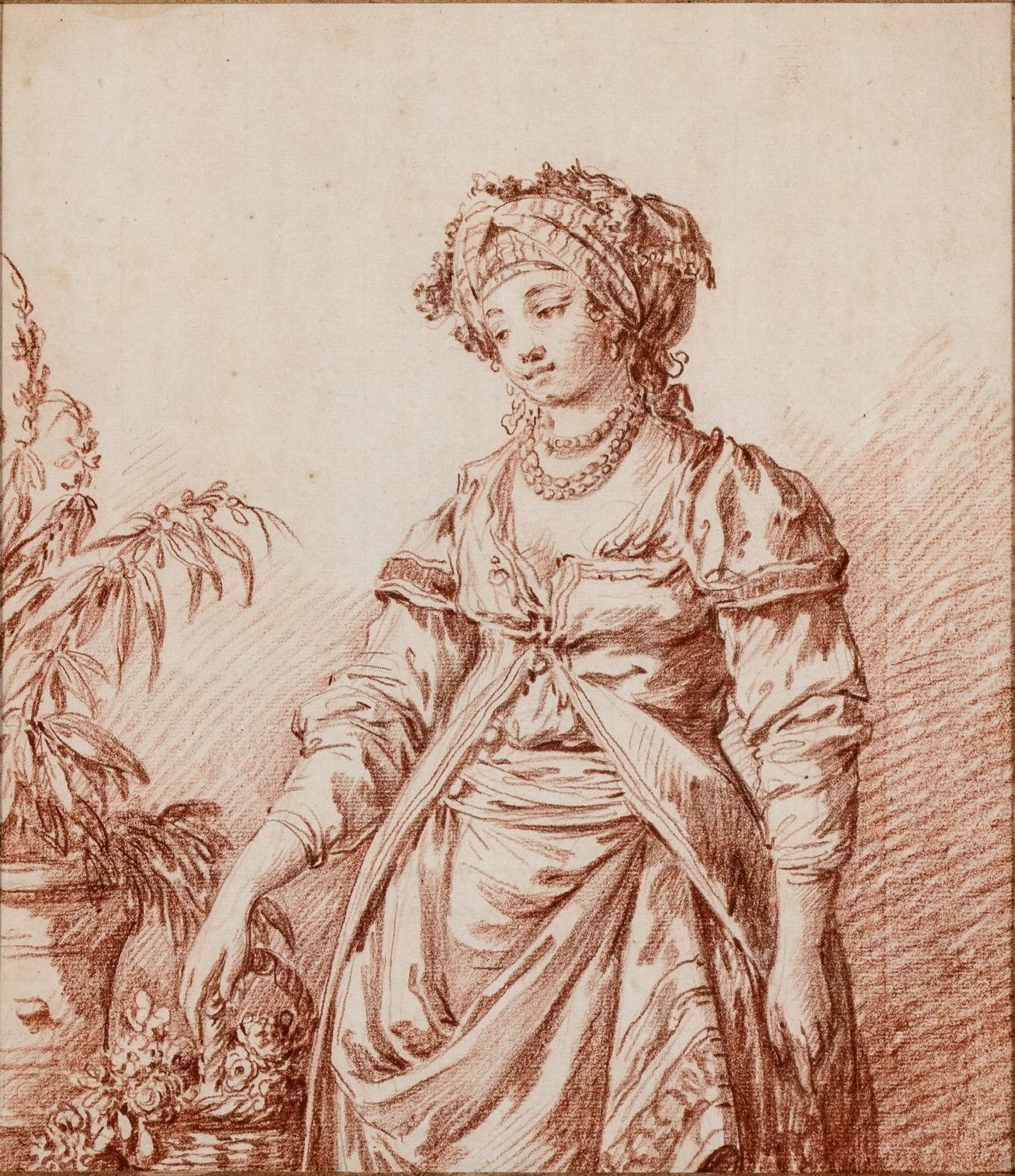GILLES DEMARTEAU
(Liège 1722 – 1776 Paris)
Woman in Fantasy Costume,
after Jean Baptiste Le Prince
Engraving
10 ⅜ x 8 ⅝ inches (26.5 x 22 cm)
JEAN BAPTISTE LE PRINCE
(Metz 1734 – 1781 Saint-Denis)
Woman in Fantasy Costume
Red chalk on paper
10 x 8 ¾ inches (25.4 x 22.2 cm)
Provenance:
Charles E. Slatkin Galleries, New York; where acquired in April 1973 by:
Ivan E. Phillips, Montreal and New York, until 2023.
Exhibited:
“Colorful Impressions: The Printmaking Revolution in Eighteenth-Century France” National Gallery of Art, Washington DC, 26 October 2003 – 16 February 2004.
Literature:
L’oeuvre de Gilles DeMarteau l’Aine Graveur du Roi, Paris, 1896, p. 101, cat. no. 389.
Ivan E. Phillips, “A Collector’s Perspective,” in Colorful Impressions: The Printmaking Revolution in Eighteenth-Century France, ed. Margaret Morgan Grasselli, exh. cat., Washington D.C., 2003, pp. 33, 78-79, cat. nos. 27a-b.
This fascinating pairing reunites Jean Baptiste Le Prince’s chalk drawing of a woman in fantasy costume with the colored print made after the original by the Flemish engraver Gilles DeMarteau. Le Prince was a pupil of François Boucher. He is best known for his extensive travels in Russia in the 1750s and 1760s, and the many depictions of Russian figures and subjects made throughout his career. The composition of this drawing and print were once thought to represent a woman in Russian costume, but it is more likely the product of the artist’s imagination. Following his return to France, he often made to works from models dressed in costumes collected throughout his travels, and this finished drawing is likely one such example—posed rather than studied from life.
DeMarteau spent the majority of his artistic career in Paris, where he established himself as an engraver and specialized in crayon manner—a copperplate-engraving process that faithfully reproduced chalk drawings in print. DeMarteau’s great skill in replicating red chalk drawings and the vogue for collecting drawings led to great success for the artist, who eventually rose to the position of Engraver to the King (“Graveur du Roi”), as indicated on the present sheet. His oeuvre includes 560 numbered plates, of which ours is no. 389. Our engraving by DeMarteau is inscribed at the bottom: “Le Prince inv. del. / Demarteau sc. / A Paris ches Demarteau Graveur du Roi, rue de la Pelterie à la Cloche. N.o 389.”




